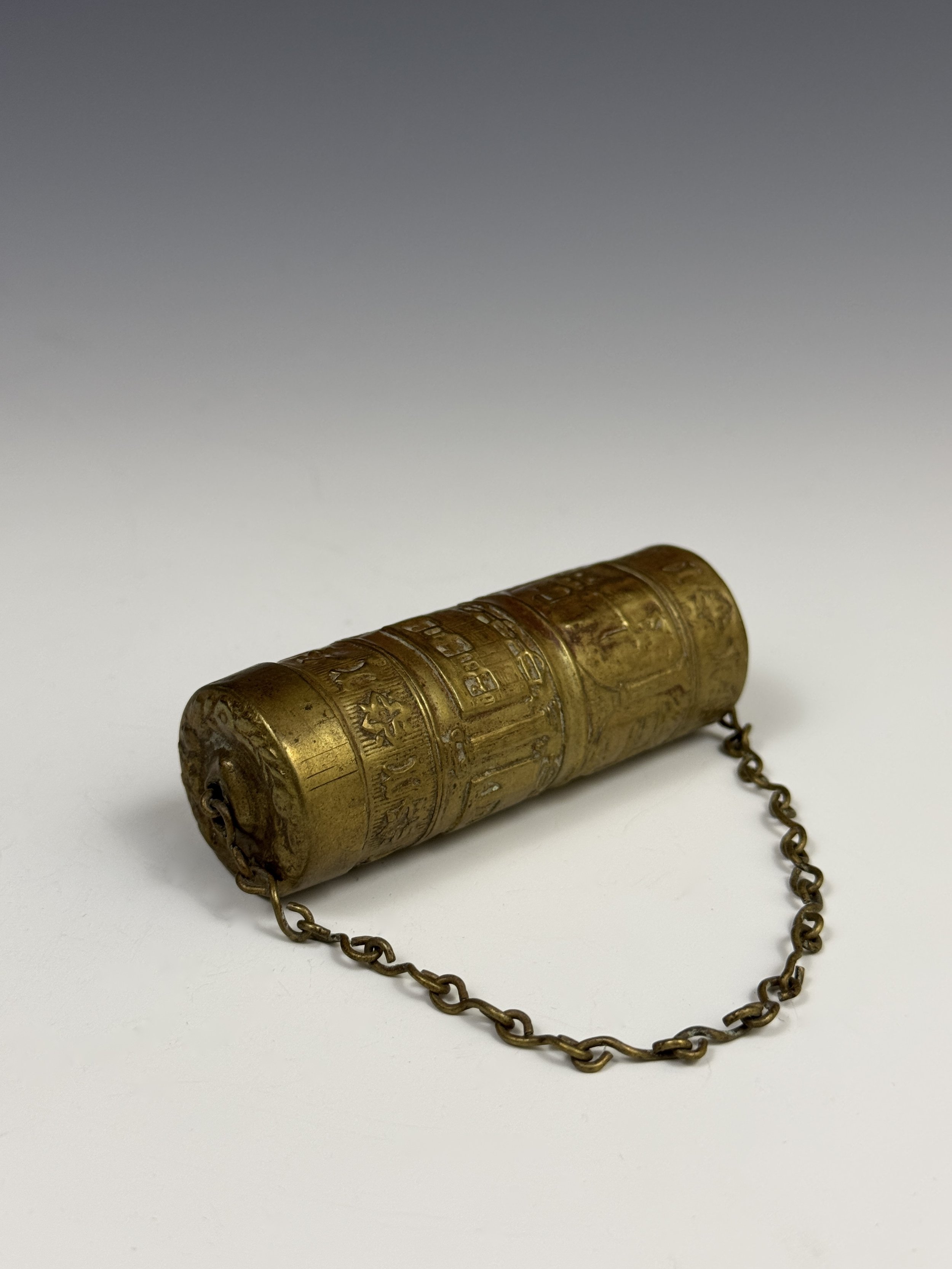Akan and Baule Objects of the Gold Trade

Asante items of the gold trade, displayed with natural gold nuggets from various locations. The scales (nsania) were used to weigh out gold with cast bronze “gold weights”. The two weights here are from natural, direct cast forms of a beetle and a crab claw. A gold dust box, "adaka" to the left was used to hold small amounts of gold dust and nuggets. The spoon “saawa” was used to measure out gold dust to the scales. This spoon is embossed with a crab image that has proverbs associated with gold. “Even the crab, that lives where the gold dust is, eats palm nuts. (Palm nuts are supposed to be the food of poor people), and “It is the crab that knows where the gold dust is to be found.”

Asante gold dust box, "adaka" with an intricately designed lid, Ghana, copper alloy. H 2.5cm. W 6.5cm. (Displayed with natural gold nuggets from various locations.) Published: Lüthi, Werner & David, Jean (2009). Exhibition catalogue: Helvetic Gold Museum Burgdorf. Gold in West African Art. Zurich: Galerie Walu, p. 46. Exhibited: Helvetic Gold Museum Burgdorf.


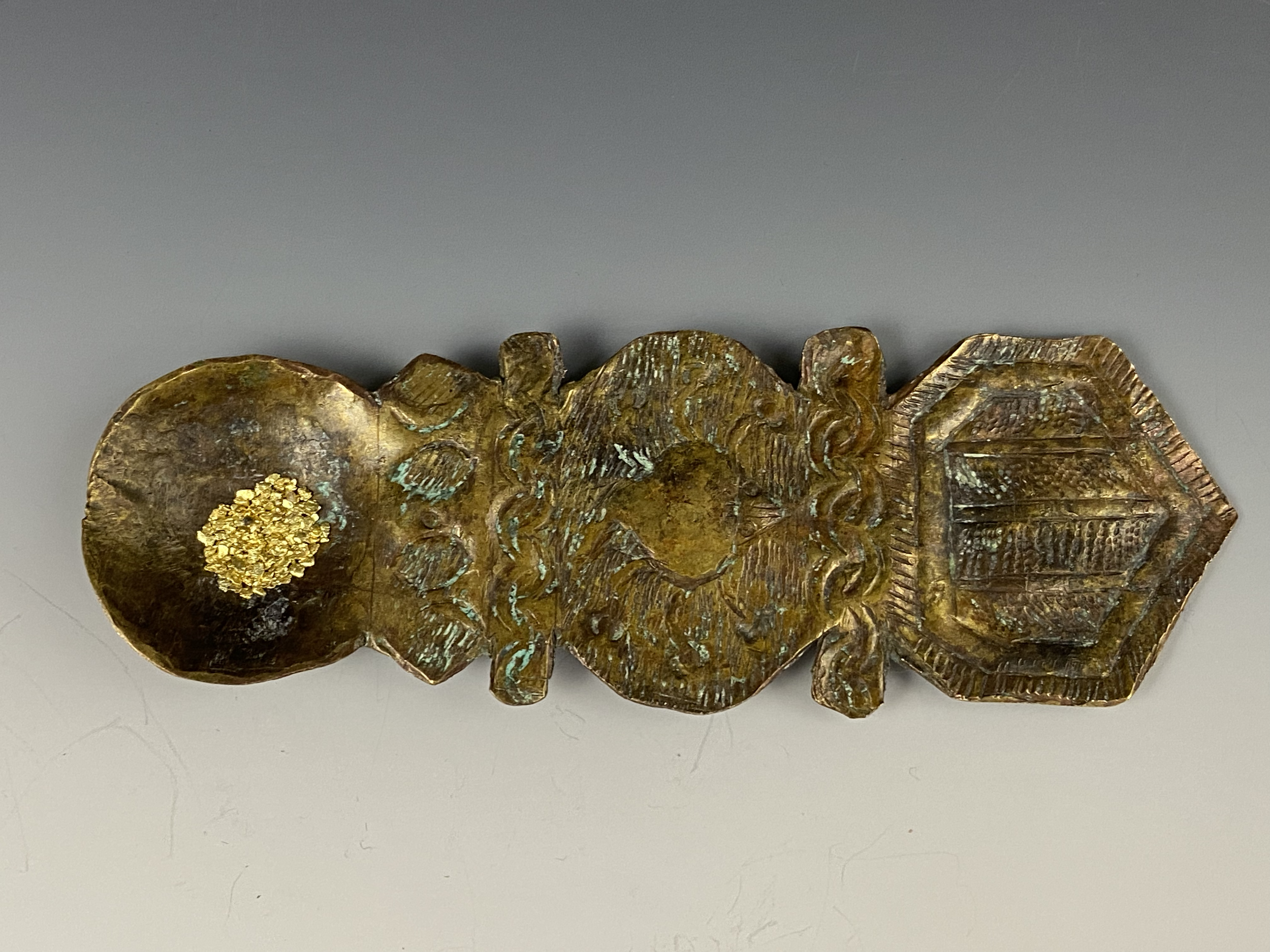
Asante brass gold dust spoon “saawa”. Embossed brass sheet with crab image and overall crocodile form. WEIGHT 35.2 Shown here with natural gold grain. ex Netherlands private collection, ex The Africa Museum, Berg en Dal, The Netherlands.

Asante brass gold dust pan/scoop, Ghana. Brass scoops like this one were used as gold pans to separate the gold dust particles from the surrounding material.


Asante gold weights (22) and a scale, "nsania" Ghana, brass. H 0.5 - 14.5cm. ex Collection of Michael von Schenck (1931), Basel. 1980-1983 Swiss Ambassador in Ghana, ex Swiss private collection, Ticino.

A group of seven Asante goldweights. 1.- a goldweight in the form of a Asante shield. 2.-A goldweight in the form of the double crocodile which shares a single stomach. 3.- A goldweight in the form of a Asante stool. 4.- A geometric goldweight. 5.-A geometric goldweight 6. A geometric goldweight. 7.- A geometric goldweight. ex Gallery Walu, Zurich, Fred (1933-2021) and Ilse (1934-2021) Mayer, Zurich

Asante cast bronze gold weight, 34mm long x 13mm wide. Direct cast of a beetle from the Curculionidae family. It is a variant of the beetle which seems to be an important figure among the Baoule of the Ivory Coast. A proverb related to this insect in Goldgewichte Akan Goldweights": "If you don't like the taste of the palm beetle, console yourself with its grub." ex collection of Christiane Rivière, Saujon, France

Asante gold weight in the form of a beetle,1 3/8 in. Provenance: E. Lorenz "Larry" Borenstein, New Orleans, Nov. 1973; Estate of Curator Scholar and Advocate of Outsider and Contemporary Art Bill Fagaly, sold to benefit Prospect New Orleans' William A. Fagaly Memorial Fund for Social Impact. Ill.: Burton, Marda. "Every Nook and Cranny: A Museum at Home". Veranda Summer 1995: p. 196-201;
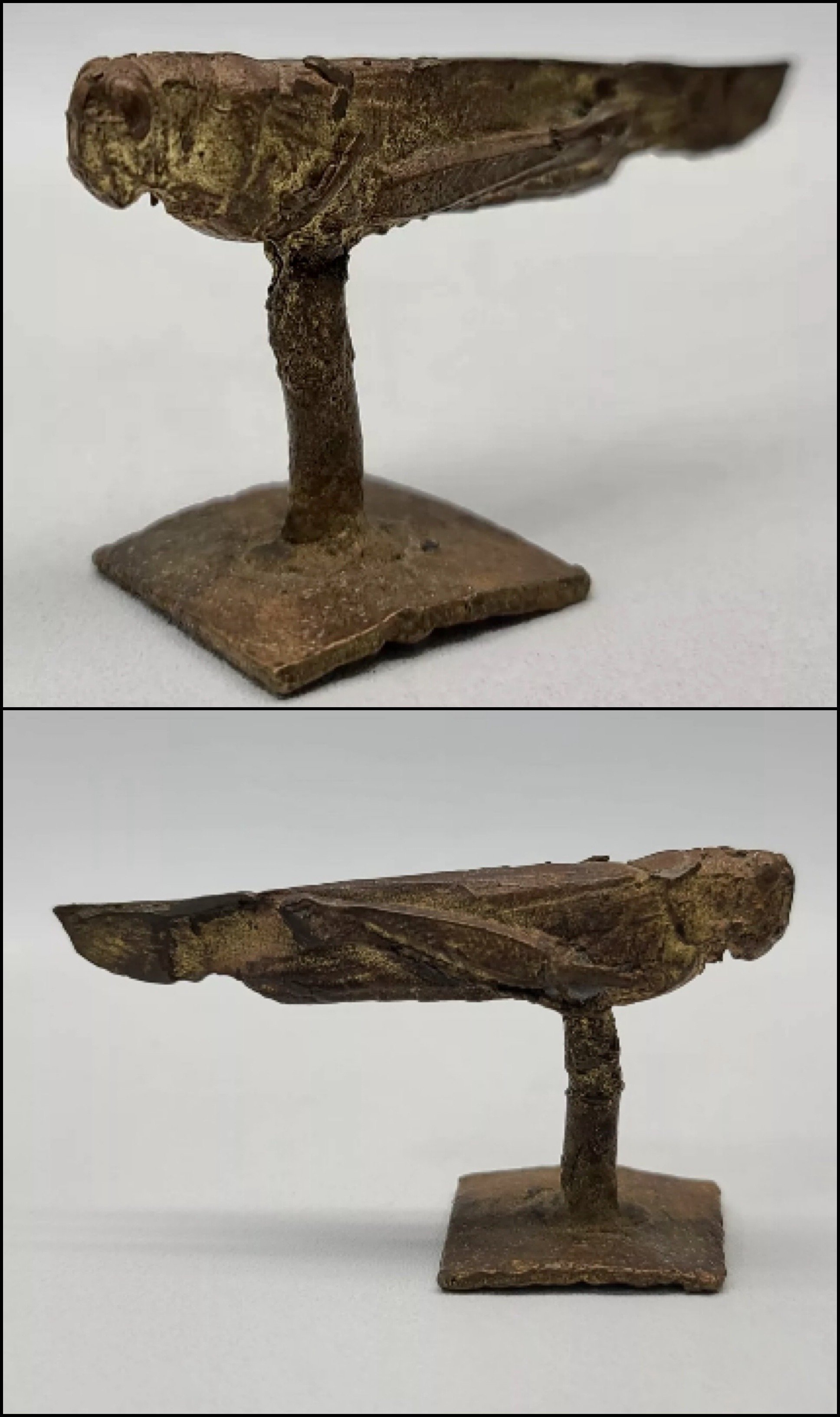
This is an unusual Asante gold weight of a grasshopper cast directly from nature. During this process, the grasshopper is directly embedded within the clay or moulding material with the attached wax sprue and cup (a way to get the metal to the grasshopper) and fired until the grasshopper's body shell is completely burned away leaving the hollow void in the shape of the insect. The metal is then poured into the hollow mould. Once cooled, the clay is carefully broken away and removed from the cast metal. In this example, the casting sprue and cup is still attached to the grasshopper casting which is typically cut off of the finished casting. Cast copper alloy with a beautiful patina. 1.625" H x 3" L, Ghana.
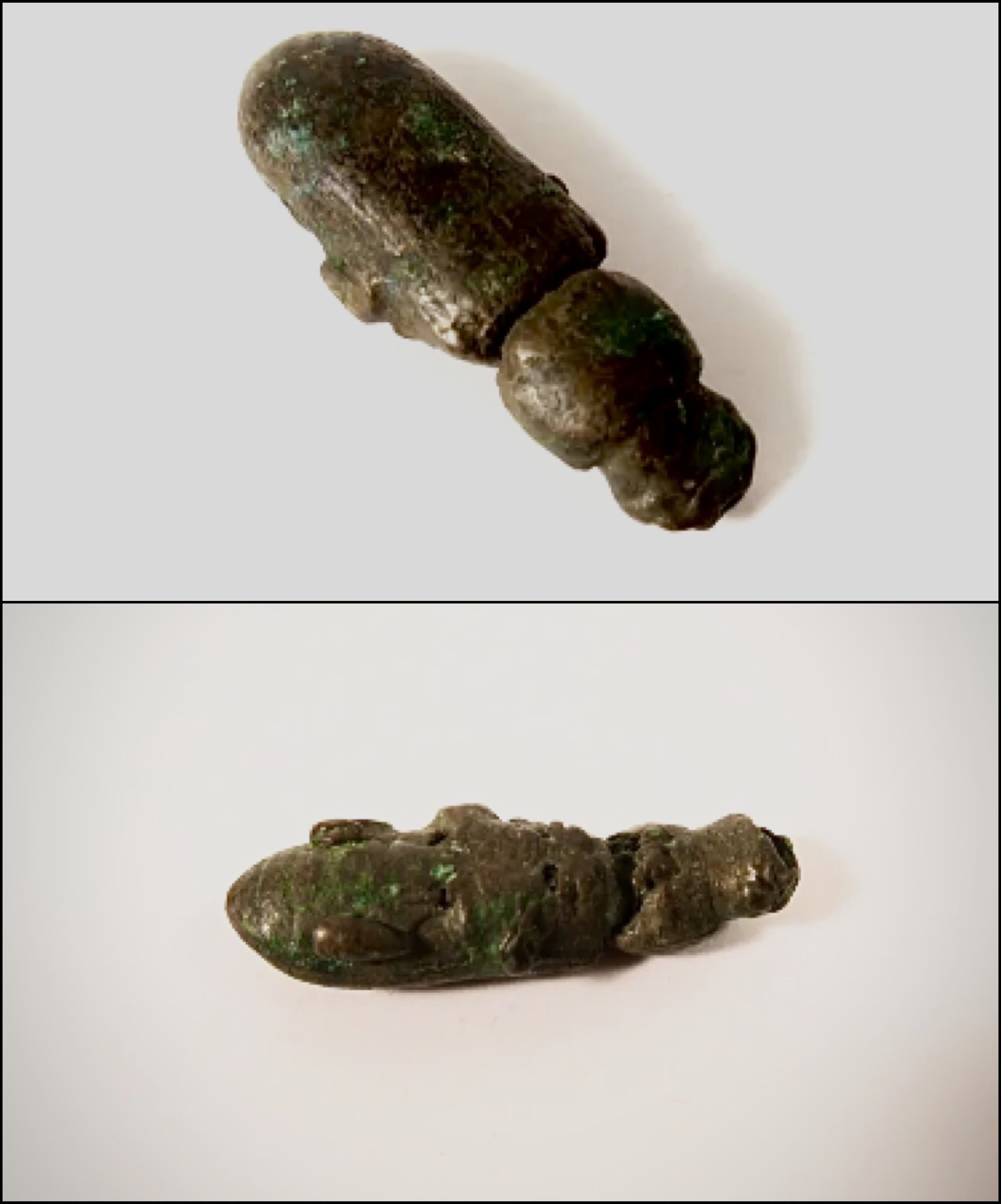
Another Asante beetle gold weight, directly cast from nature.
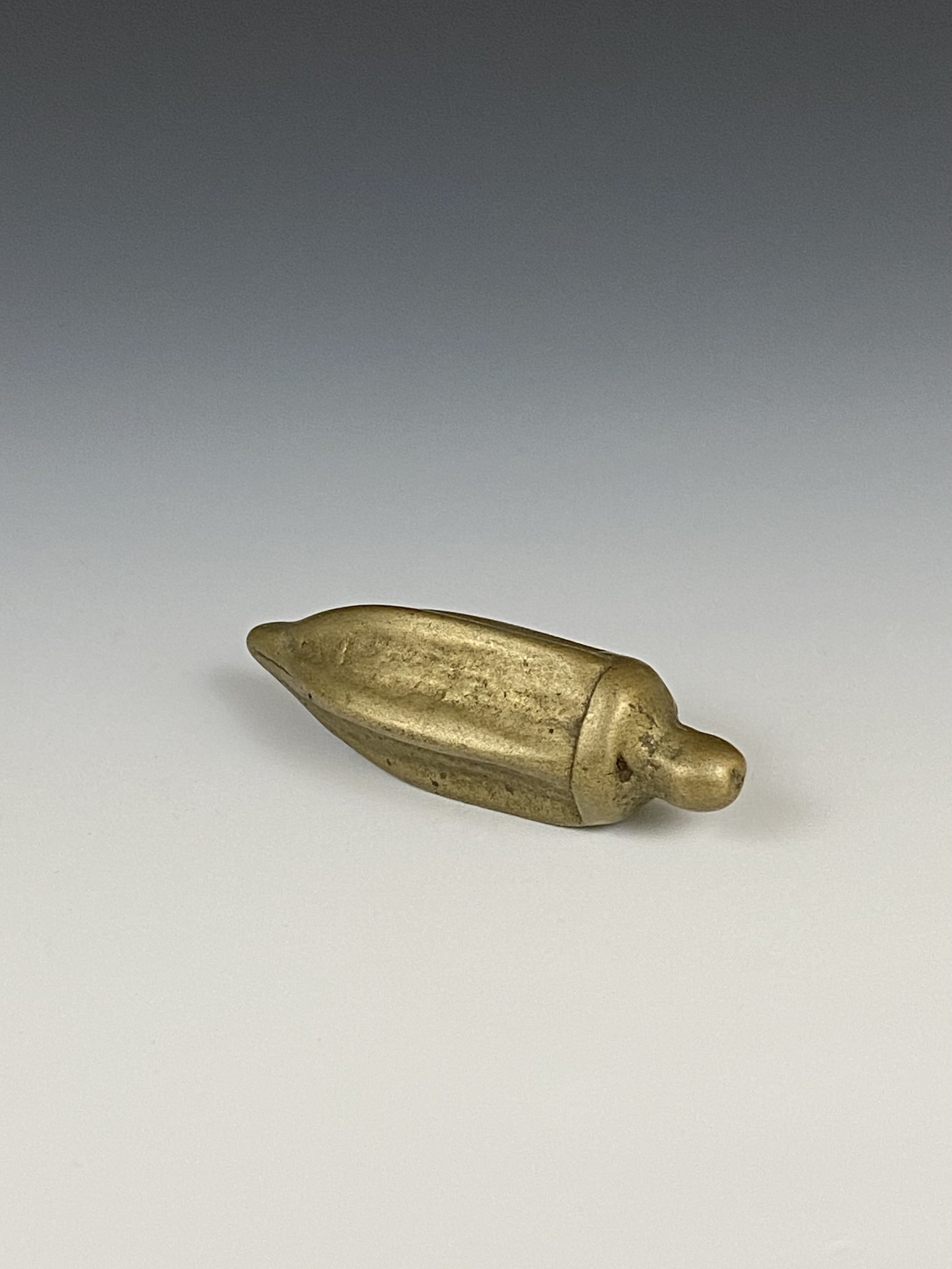
Asante gold weight in the form of okra, 2 in. Provenance: Davis Gallery of Ethnographic Art, New Orleans, Nov. 1981; Estate of Curator Scholar and Advocate of Outsider and Contemporary Art Bill Fagaly, sold to benefit Prospect New Orleans' William A. Fagaly Memorial Fund for Social Impact. Ill.: Burton, Marda. "Every Nook and Cranny: A Museum at Home". Veranda Summer 1995: p. 196-201;
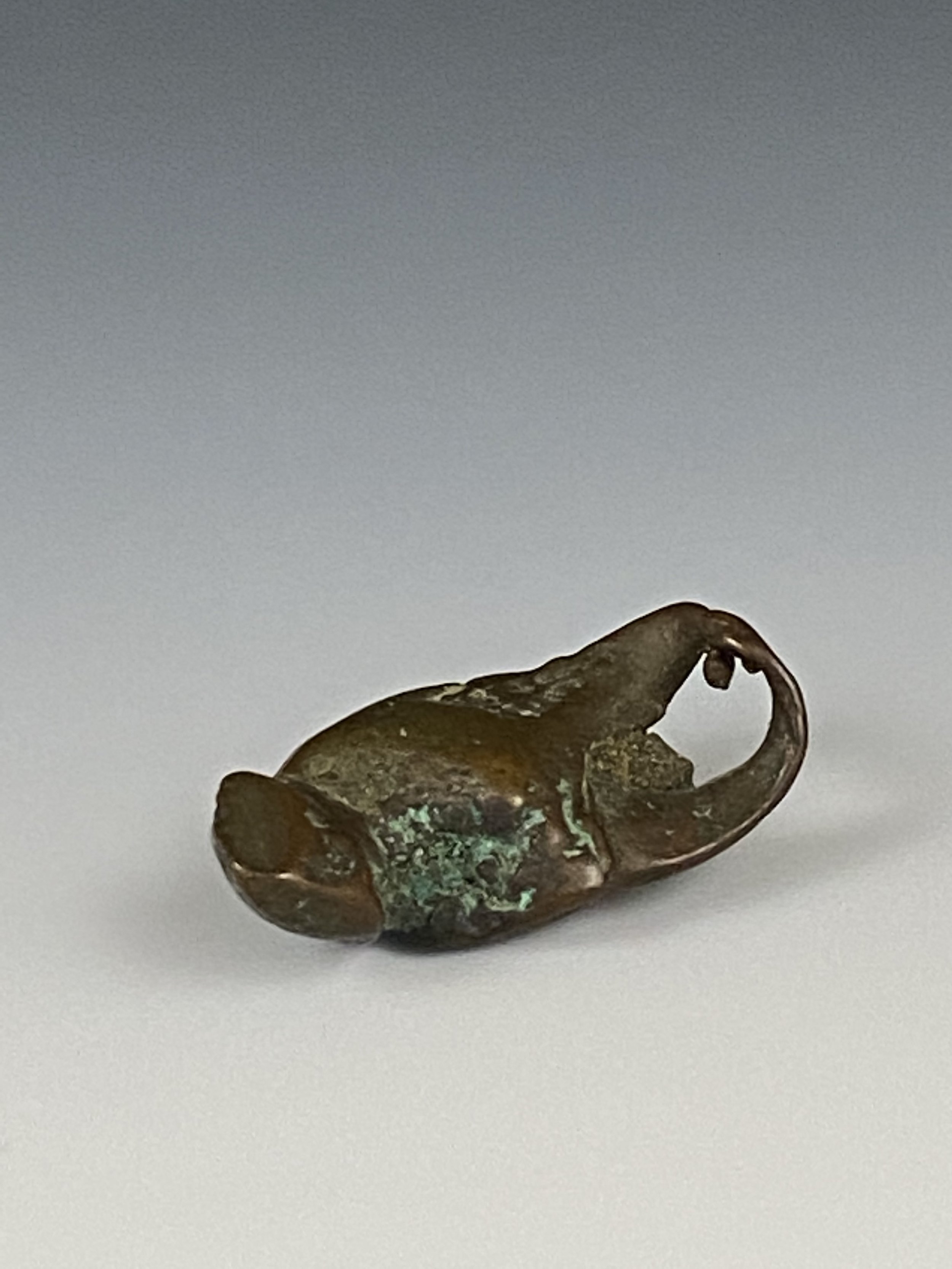
Asante bronze gold weight in the form of a crab claw (direct cast from nature), 1 1/4 in. Provenance: E. Lorenz "Larry" Borenstein, New Orleans, Nov. 1973; Estate of Curator Scholar and Advocate of Outsider and Contemporary Art Bill Fagaly, sold to benefit Prospect New Orleans' William A. Fagaly Memorial Fund for Social Impact. Ill.: Burton, Marda. "Every Nook and Cranny: A Museum at Home". Veranda Summer 1995: p. 196-201;

Asante bronze gold weight in the form of a crab claw, 1 1/4 in. Provenance: E. Lorenz "Larry" Borenstein, New Orleans, Nov. 1973; Estate of Curator Scholar and Advocate of Outsider and Contemporary Art Bill Fagaly, sold to benefit Prospect New Orleans' William A. Fagaly Memorial Fund for Social Impact. Ill.: Burton, Marda. "Every Nook and Cranny: A Museum at Home". Veranda Summer 1995: p. 196-201;

Asante gold weight in the form of a pepper (direct cast from nature), 1 in. Provenance: Davis Gallery of Ethnographic Art, New Orleans, Nov. 1981; Estate of Curator Scholar and Advocate of Outsider and Contemporary Art Bill Fagaly, sold to benefit Prospect New Orleans' William A. Fagaly Memorial Fund for Social Impact. Ill.: Burton, Marda. "Every Nook and Cranny: A Museum at Home". Veranda Summer 1995: p. 196-201;
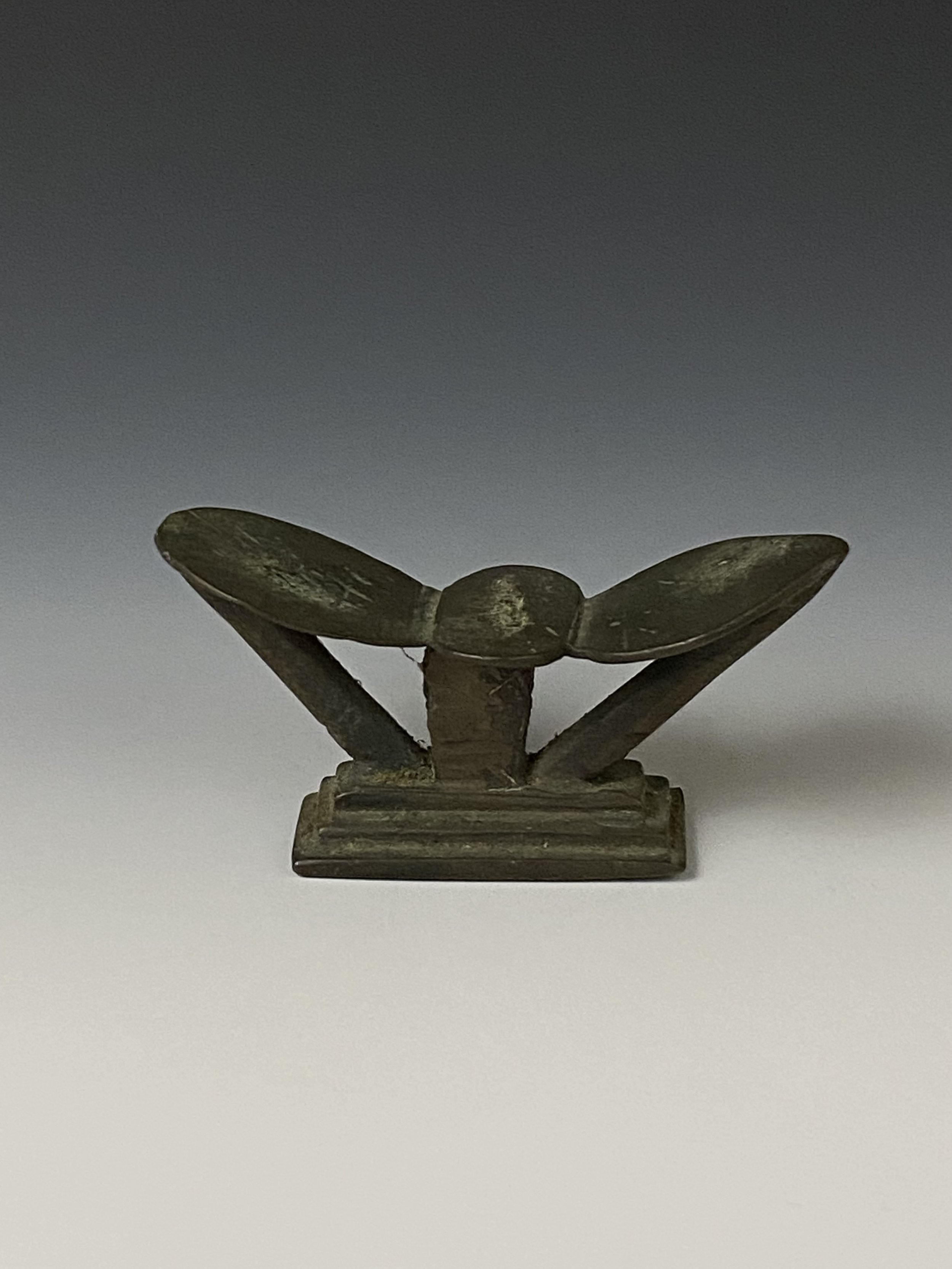
Asante bronze gold weight of an Asante stool, 2 1/4 in. Provenance: Gift of James B. Brynes, New Orleans, July 1967, Estate of Curator Scholar and Advocate of Outsider and Contemporary Art Bill Fagaly, sold to benefit Prospect New Orleans' William A. Fagaly Memorial Fund for Social Impact. Ill.: Burton, Marda. "Every Nook and Cranny: A Museum at Home". Veranda Summer 1995: p. 196-201; Published/ exhibited: William A. Fagaly, New Orleans Collects: African Art, Isaac Delgado Museum of Art, Feb. 2-Mar. 31, 1968, cat. no. 68; Peggy McDowell, Traditional Art of Africa, Art Department Gallery, Newcomb College, Tulane University, New Orleans, Feb. 9-21, 1969, p.7, cat. no. 29.
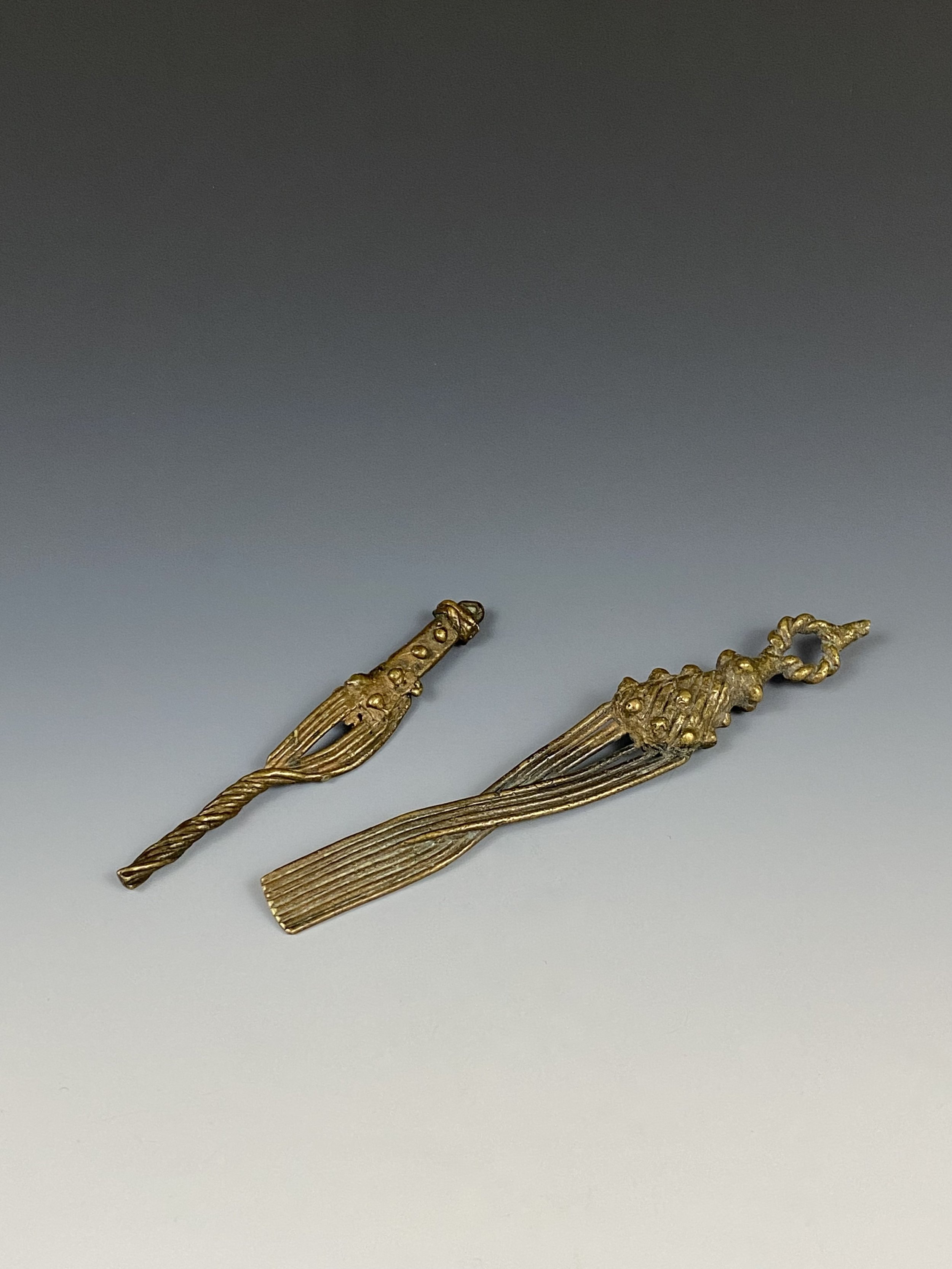
Two Asante 19th c. gold weight in the shape of a Elephant tail fly whisk (mena). Bronze.

Asante cast bronze gold weight in the shape of a sea shell. 25 grams. 4.5cm x 4 cm. EX Italian private collection, Este, Italy

A group of four Asante goldweights. Cast copper alloy. 1. Goldweight in the form of a cartridge belt,appr. 5.5 x 2.3 x 0.8 cm, 12 grams. 2. Goldweight in the form of a royal state sword, 6.6 x 1.2 x 1.1 cm, 12.4 grams. 3. Goldweight in the form of a rare sword, appr. 5.3 x 2.3 x 0.6 cm, 16.0 grams. 4. Goldweight in the form of a elephant tail fly whisk (“mena”), appr. 6.0 x 1.3 x 0.5 cm, 7.3 grams. Ex private Netherlands collection

An Akan copper alloy goldweight in the form of a royal sword with sword ornament. 60mm, 17g. Ex private German Collection
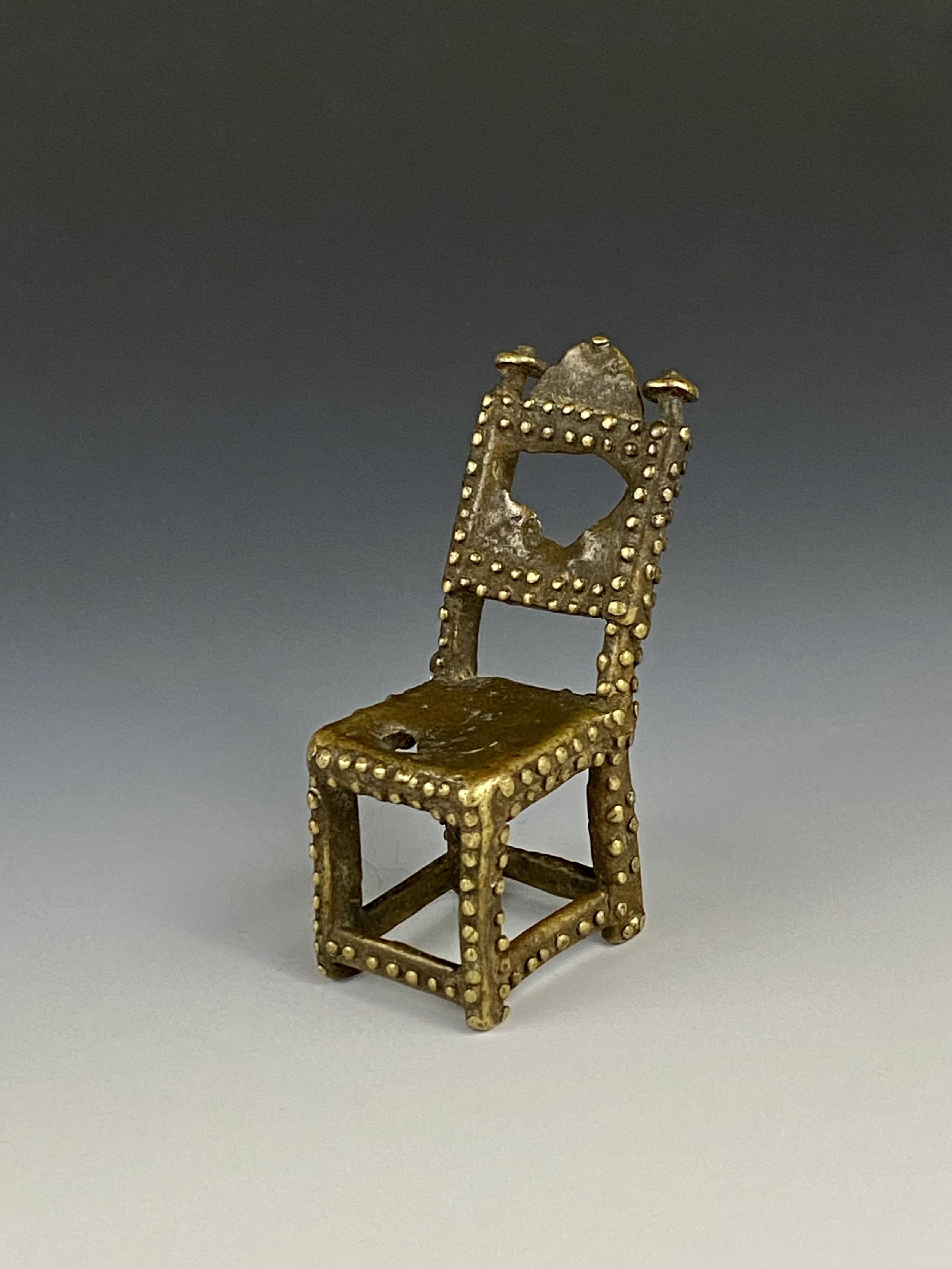
Asante gold weight in the form of a chief’s chair. Height approx. 46mm. Weight: approx. 22.2 g. Copper alloy EX German collection
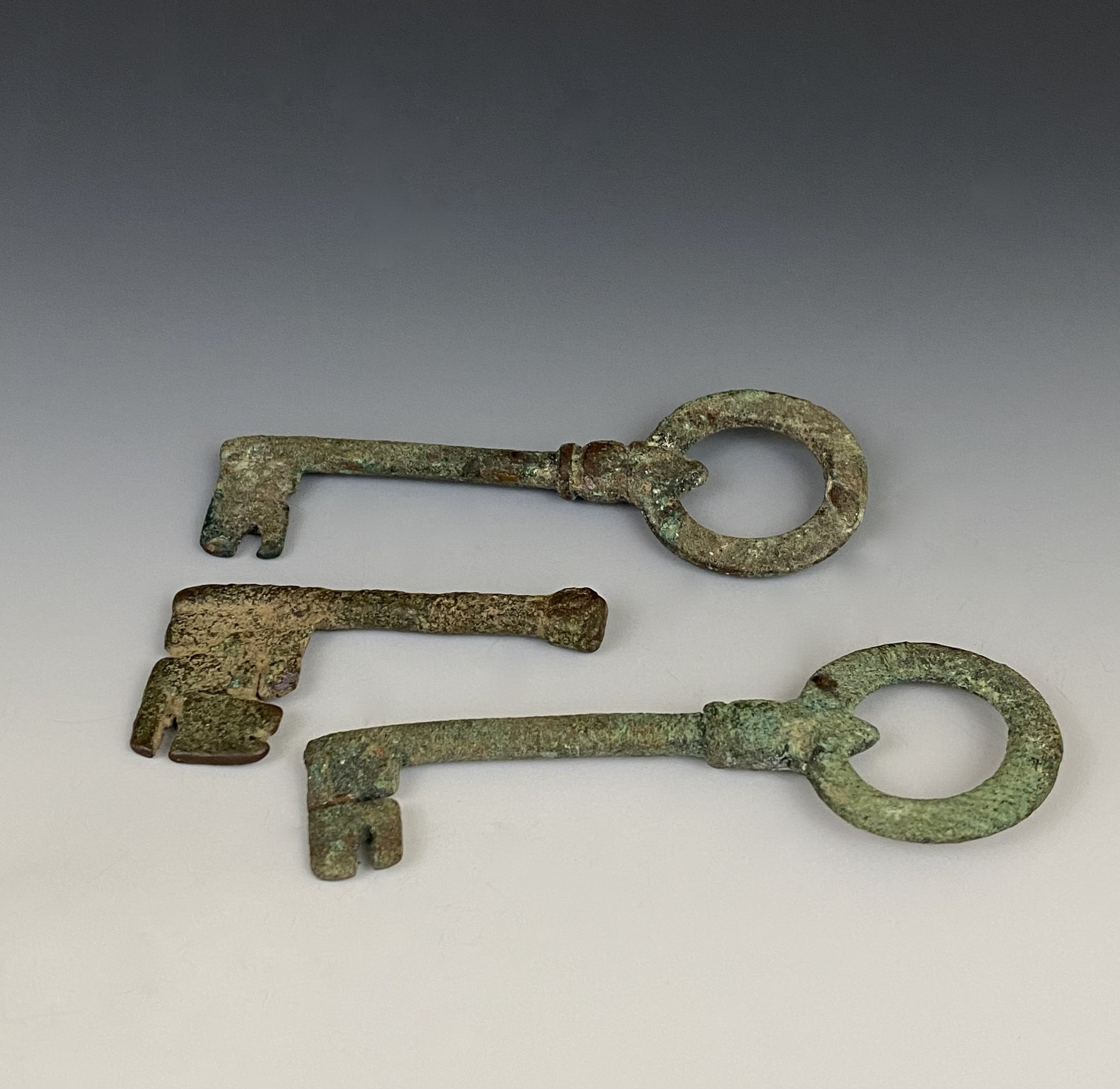
Three colonial era relics from the former colony of the Gold Coast (Ghana). These copper alloy keys were found with and most likely were used as gold weights. Items of European origin which found their way into the fabric of the Akan imagery became status and prestige symbols for the owners.


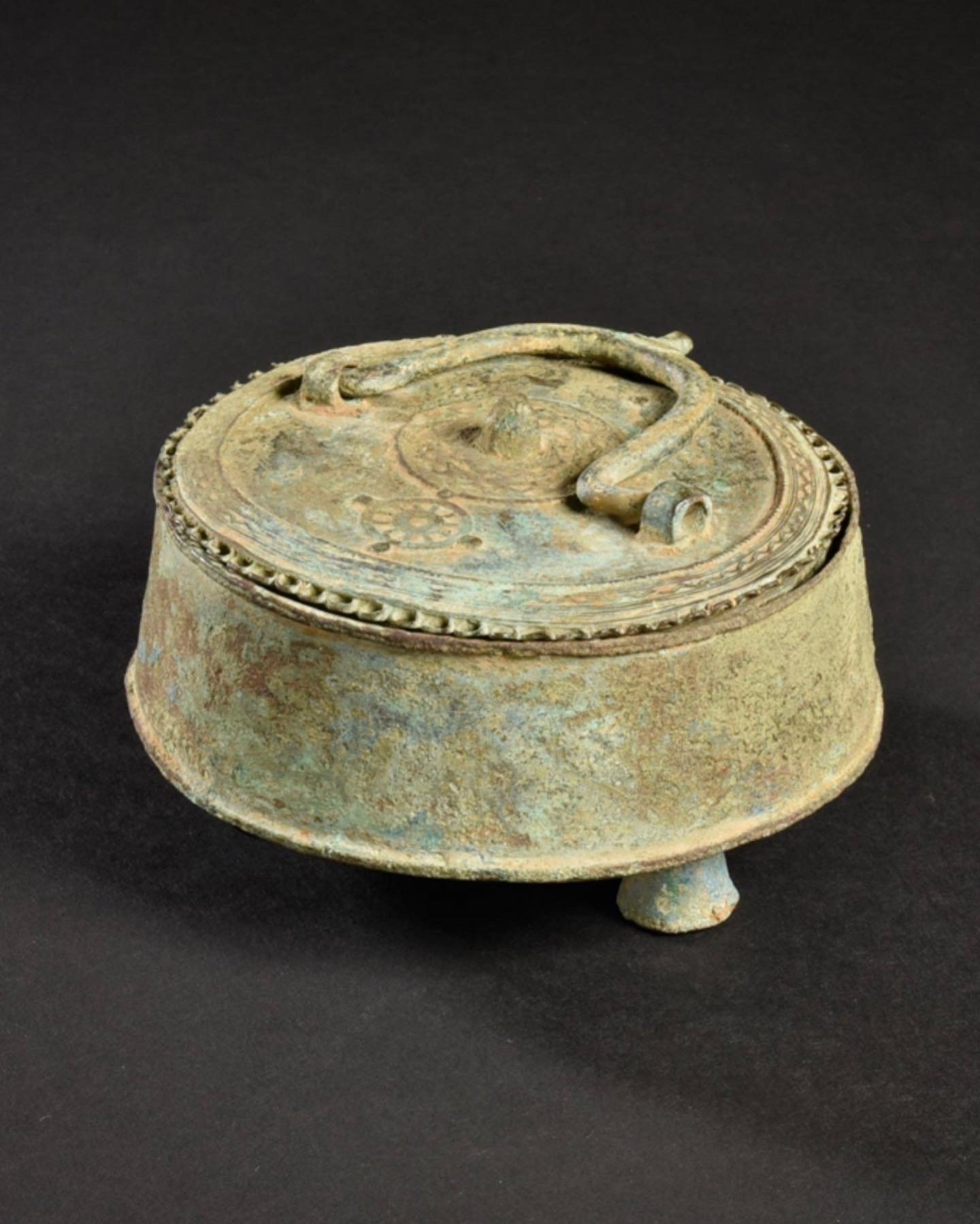
Lidded container, "kuduo"Asante, Ghana. Brass. H 6.5 cm. Ø 11.5 cm. Shown in the Jean-Louis Picard catalog (Collection Roger Budin), Paris, October 8, 1991, lot 174, and described there as follows: "Djenne, Mali. Bronze receptacle box, tripod. Lid and handle, reminiscent by its shape although the term is improper for a Kuduo. Superb patina of excavation with green and blue slip. Supreme decorative refinement of the lid decorated with a motif of Power wheel and a fine border frieze in adjourned type. We are in the presence of one of the rare copies known to date of this type of object. A moving testimony to the talent, an undeniable technical and aesthetic success of this great African art. (Small accidents.) In the current state of dating techniques, no research laboratory accepts to take the risk of rigorous precision, but stylistically, some very close terracotta pieces are located as dating from 4th- 8th centuries. Kuduo vessels originally came from northern regions and found their way into the Akan culture through the earliest trade relations, where they served various functions, including rituals, as valuable status symbols. Provenance: Estate of Roger Budin (1928- 2005), Geneva. Published: Lüthi, Werner & David, Jean (2009). Exhibition catalog: Helvetisches Gold Museum Burgdorf. Gold in West African Art. Zurich: Galerie Walu. Page 48. Exhibited: Helvetian Gold Museum Burgdorf (2009).


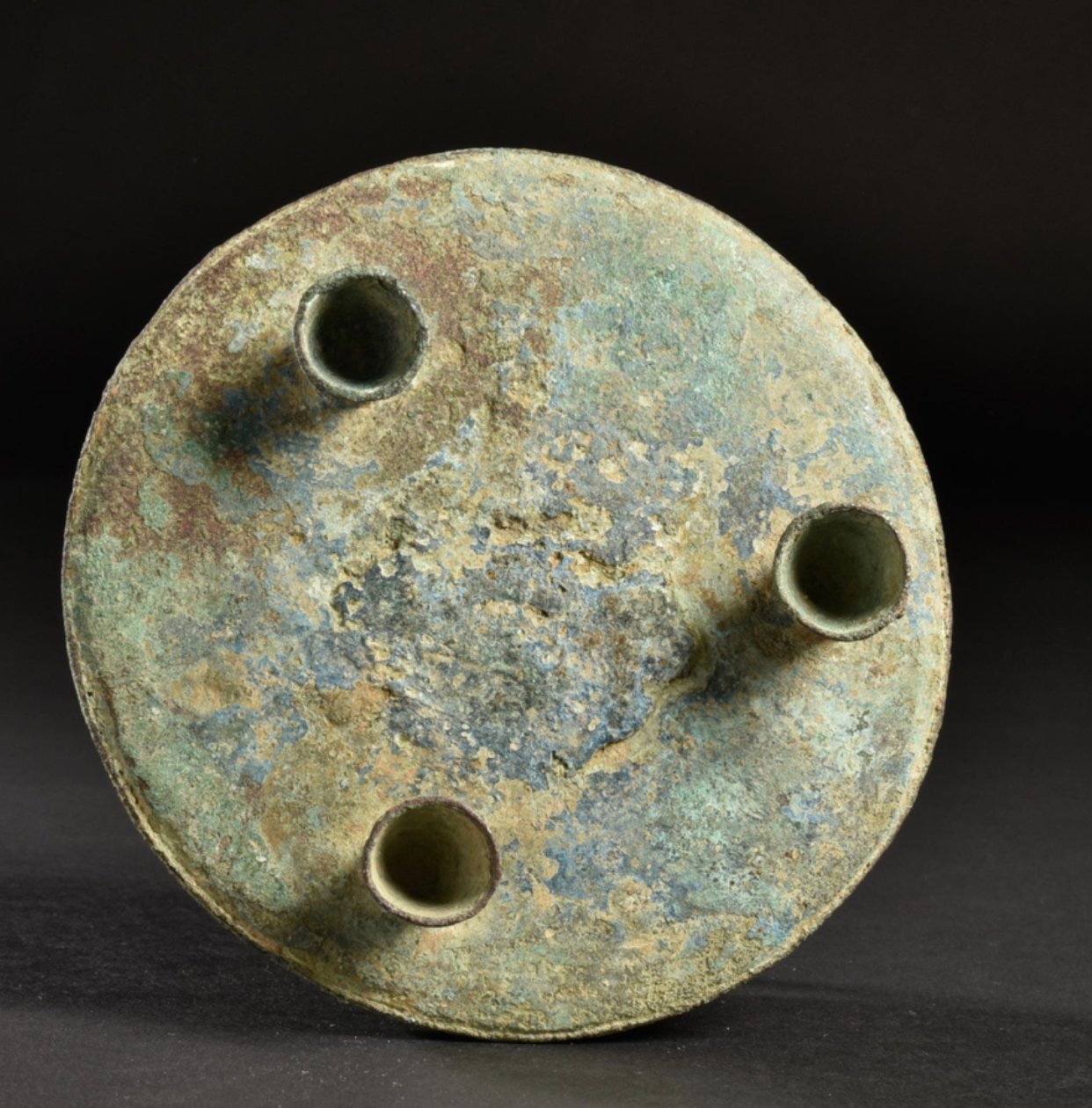




Gold dust box, "adaka" Asante, Ghana, copper alloy. H 2.5cm. diameter 5 cm Provenance: René David (1928-2015) Exhibited: International Museum of the Gulf of Guinée, Togo (2005-2011). Exhibited: Helvetic Gold Museum Burgdorf. Published: Lüthi, Werner & David, Jean (2009). Exhibition catalogue: Helvetic Gold Museum Burgdorf. Gold in West African Art. Zurich: Galerie Walu, p. 46



Lidded container, "kuduo" Asante, Ghana. Brass. H 23 cm. Kuduo vessels originally came from northern regions and found their way into the Akan culture through the earliest trade relations, where they served various functions, including rituals, as valuable status symbols. Provenance: Galerie Walu, Zurich. Switzerland (1993) Published: Lüthi, Werner & David, Jean (2009). Exhibition catalog: Helvetisches Goldmuseum Burgdorf. Gold in West African art. Zurich: Walu Gallery, page 46. Exhibited: Helvetian Gold Museum, Burgdorf (2009).



An old Asante lidded container (Kuduo). H 9.5 cm, Dia: 9.5. Older Asante containers hold importance and history for their owners and often go through a series of repairs as this example demonstrates.



Another old Asante lidded container (Kuduo). H 8.5 cm, Dia: 9. Approx. 407g, copper alloy. Older Asante containers hold importance and history for their owners and often go through a series of repairs as this example demonstrates.




Container for Gold Dust, Snuff, or Tobacco (Adakawa), Mid–/late 19th century, Akan-speaking peoples. Ghana; manufactured in England, Coastal West Africa. ex private dealer collection, Rincon, Puerto Rico.
